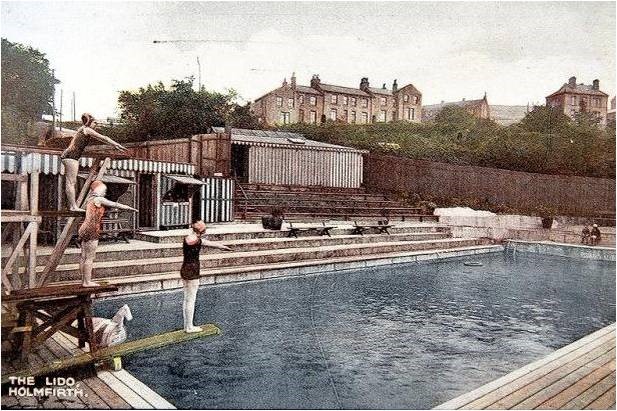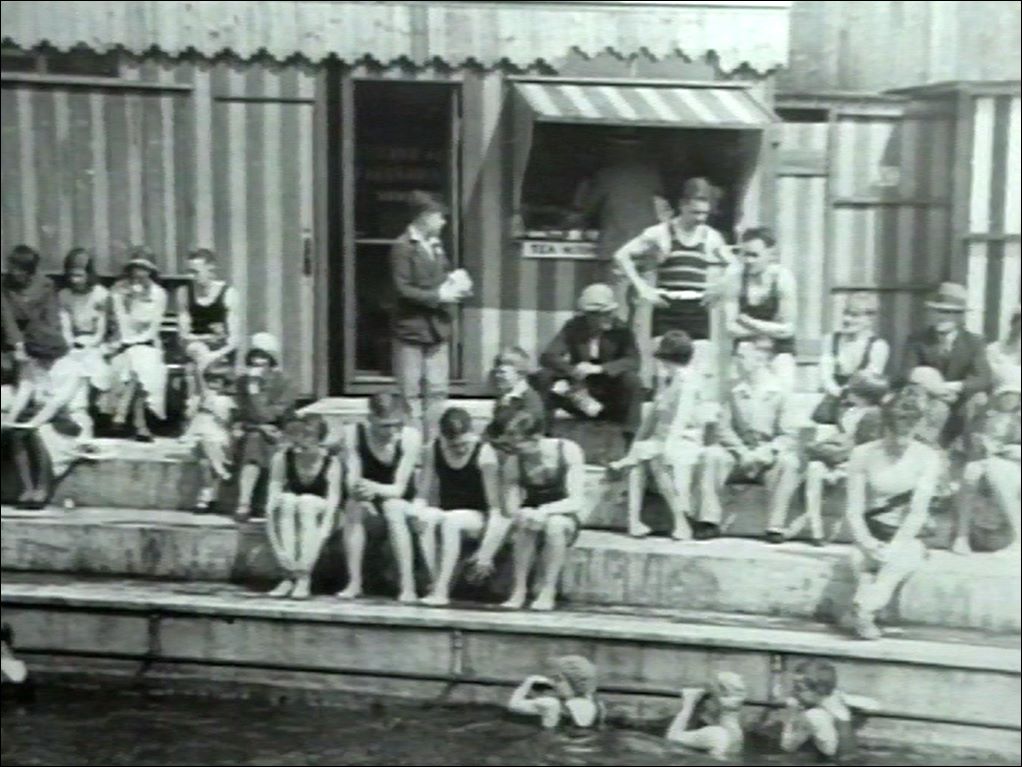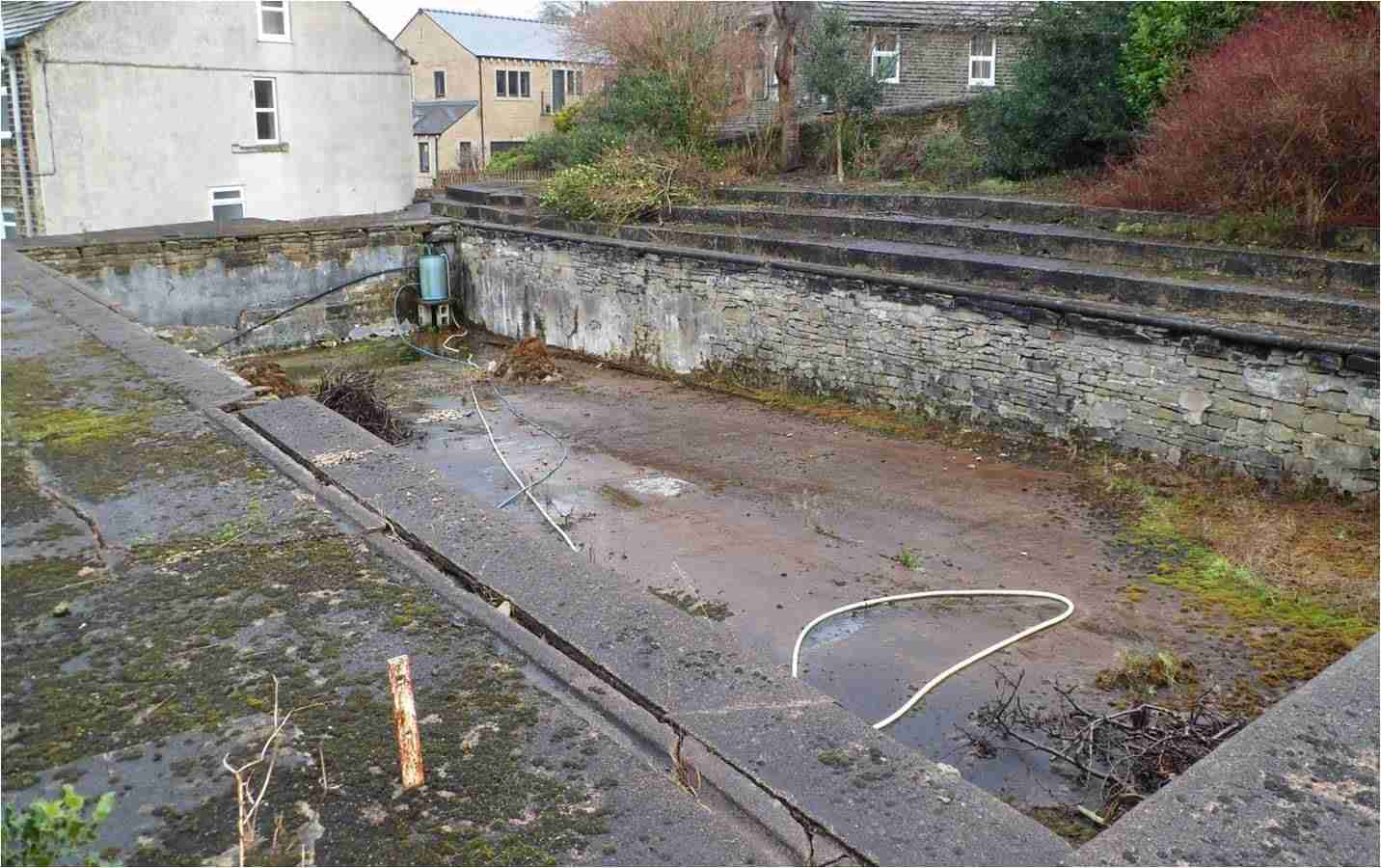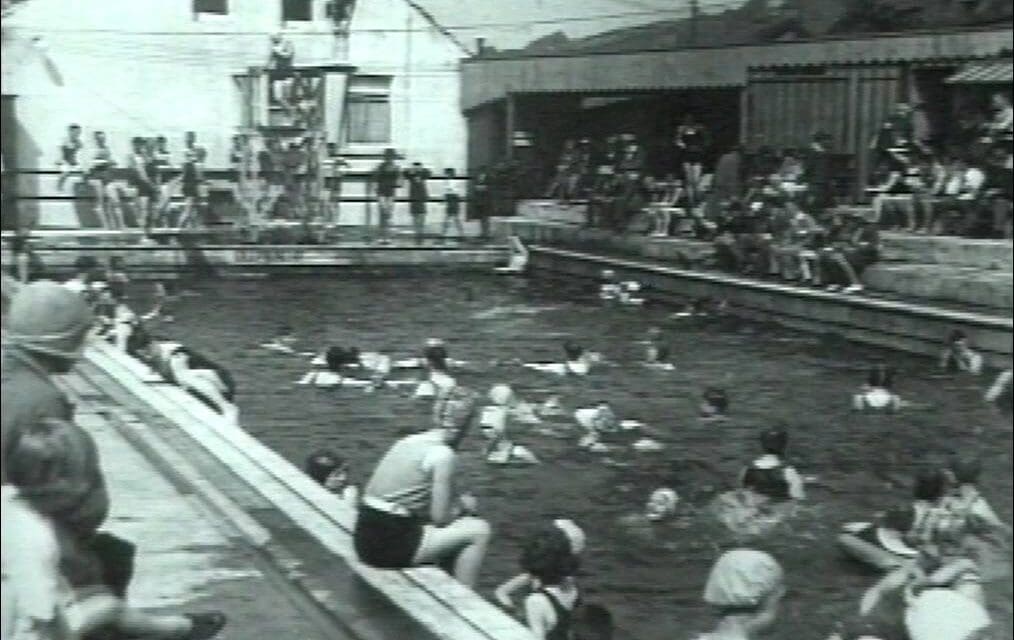By Local Historian Vincent Dorrington
Holmfirth’s famous Lido is presently a forlorn, decaying concrete structure at Goose Green. Today this public outdoor swimming pool only lives on as fabulous memories for its older residents.
Attempts to raise money for a public swimming pool for Holmfirth began in 1887 but came to nothing.
Then Joseph Bailey, a Holmfirth joiner and mill owner of Newfold Mill, had the brainchild of an idea to change his mill pond into a swimming pool.
It took him two years to complete at a cost of over £1,000. It was 25 yards long by 10 yards wide and was opened on August 11, 1930, and lasted for nearly 20 years.
In fact, it was later found to be about a foot short and he had to lengthen it to make it suitable for competition use.
Locals jokingly called it ‘Bailey’s Bath’ but Joseph Bailey knew there was money to be made as the craze to be fit swept the country.
In 1930 the swimming pool opened to the public and was soon named Holmfirth Lido. Miss Doris Camping of Surrey and Mr J W Bedford of Holmfirth took the plunge.
Each swam a length and then Miss Camping returned to the middle and, standing in the water up to her neck, declared the bath to be open. Over 400 people, on peak days, came in the hot summer of 1930.

The cold water supply was from a spring which also supplied an old trough in Goose Green. Mr Bailey had a boiler quickly installed in the old mill to heat up the pool water to a temperature of 9 degrees C, although it could be a bit of a struggle in cold weather.
It must be remembered that the Holme Valley was a textile valley and due to the local mill chimneys pouring out smoke, the pool had to be skimmed each morning to clean the soot off the surface of the water.
Advertising ensured the success of the Lido. Adverts appeared most weeks in the ‘Holmfirth Express’, each with the bathing girl logo and words extolling the pool’s delights.
An emphasis was placed on the clear sparkling water where people could acquire health and vigour. The people of Holmfirth came to believe this and school parties of up to 800 a week learned how to swim in the Lido’s waters.
Admission charges were 6d for adults, 4d for children, with spectators paying half. The bath was open from May to the beginning of October. Weekday opening times were 7.30am until sunset. Sundays were 7.30am to 10am and 2.30pm until sunset.
At the peak of the season in 1931 up to 1,000 people a day visited the pool with, on occasion, over 200 in the water at a time.

The popular Lido attracted visitors from Huddersfield, Wakefield, Manchester and even further afield.
Diving boards, a sliding chute and a great water fountain added to the appeal of the Lido. Concrete flooring and terracing surrounded the pool adding to the viewers’ comfort.
A tea room provided hot drinks. Cups of Oxo, at 1d a cup, proved to be especially popular. For nearly 20 years the Lido made money, enabling Mr Bailey to build Lido House, next to the pool in 1934.
Innovations and developments at the complex ensured the success of Holmfirth Lido. Interclub polo matches, high diving and swimming exhibitions were organised.
In 1932 the Lido was illuminated for those wishing to bathe during the hours of darkness. By the following year a water filtration plant was fitted.
This event was marked by a Grand Gala. Tom Ward, the four-year-old boy wonder from Ashton-Under-Lyme gave a swimming display to mark the event.
Kenneth Lockwood, from Huddersfield Cine Club, filmed swimmers and divers at this time. Miraculously, this old film from the 1930s, was discovered when a mill was being cleared out in Milnsbridge.
Trevor Spencer and David Whitworth, of the Huddersfield Film Makers Club, included scenes from this film in their year 2000 prize winning documentary.

Further improvements were made when a 1,200 sq ft glass canopy suntrap was fitted in 1936 at the shallow end where the sliding chute was. Novel underwater floodlighting was fitted at the same time.
Throughout the war years the Lido remained popular. 1944 saw a great flood in Holmfirth. Many Lido swimmers who had parked their cars at Hollowgate, at the bottom of the hill, had their cars swept away.
Soon after the war ended, so did the Lido. Mr Bailey died in 1948 and the Lido opened for one more season in 1949.
Despite attempts in 1949 to sell the Lido as a going concern, there were no offers. Finally in 1952 it was drained of its waters and its fixtures were dismantled.
All that is left today are the crumbling foundations of the bath and the happy memories older folk have of this Holmfirth landmark.


















